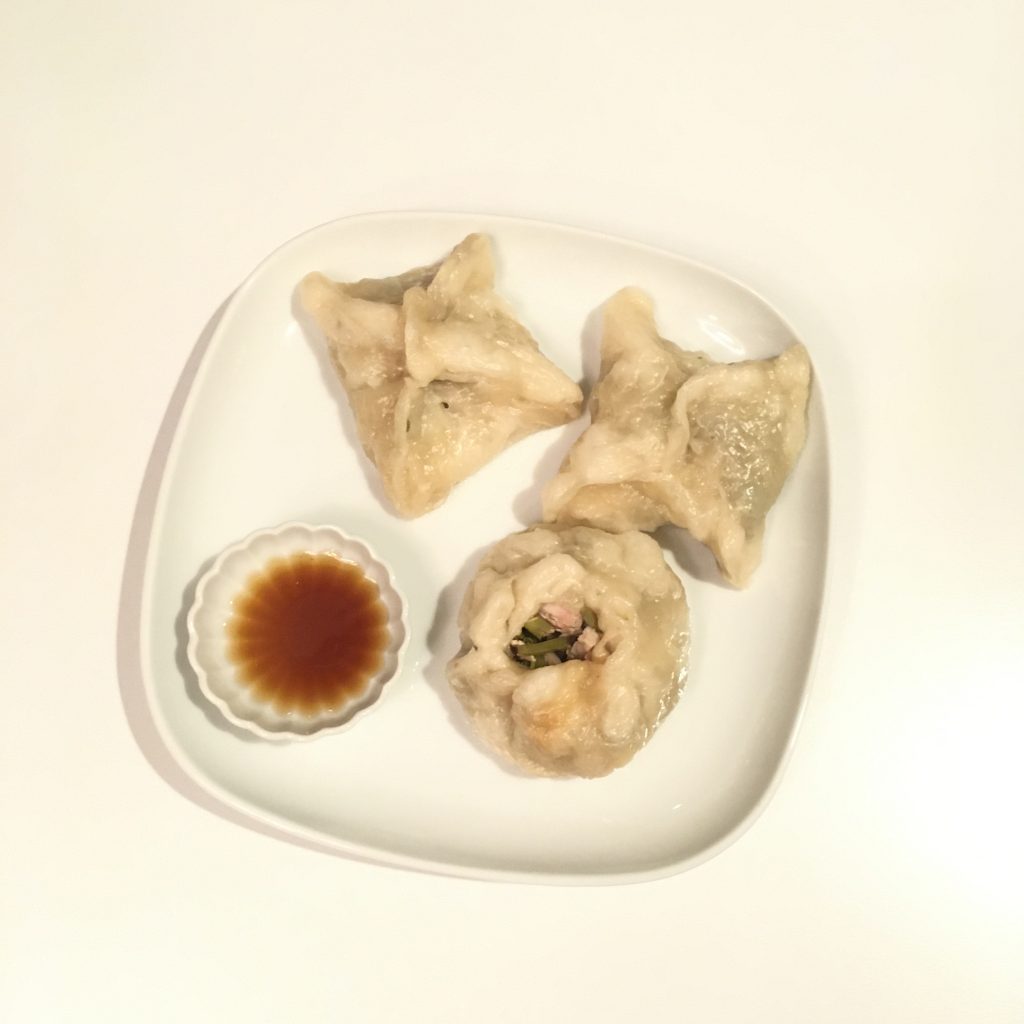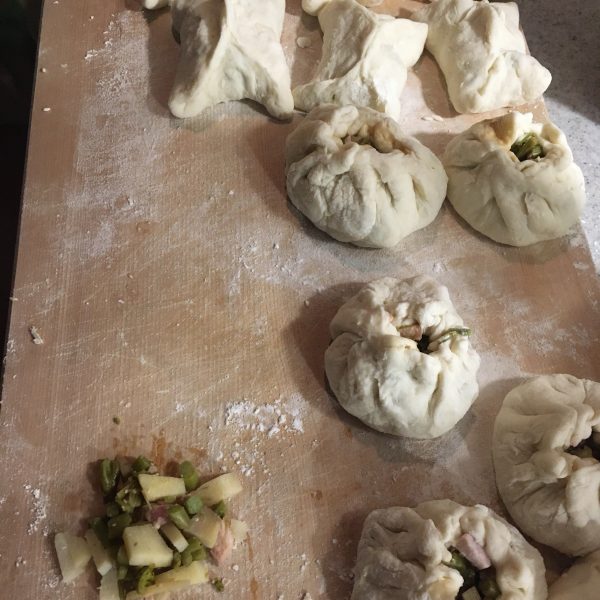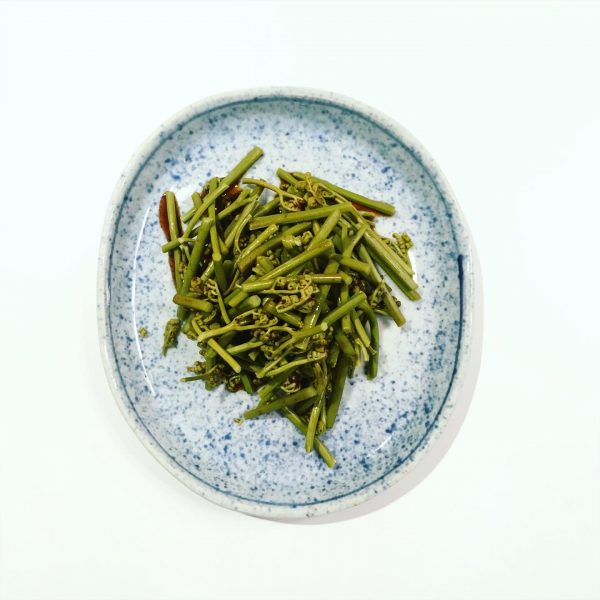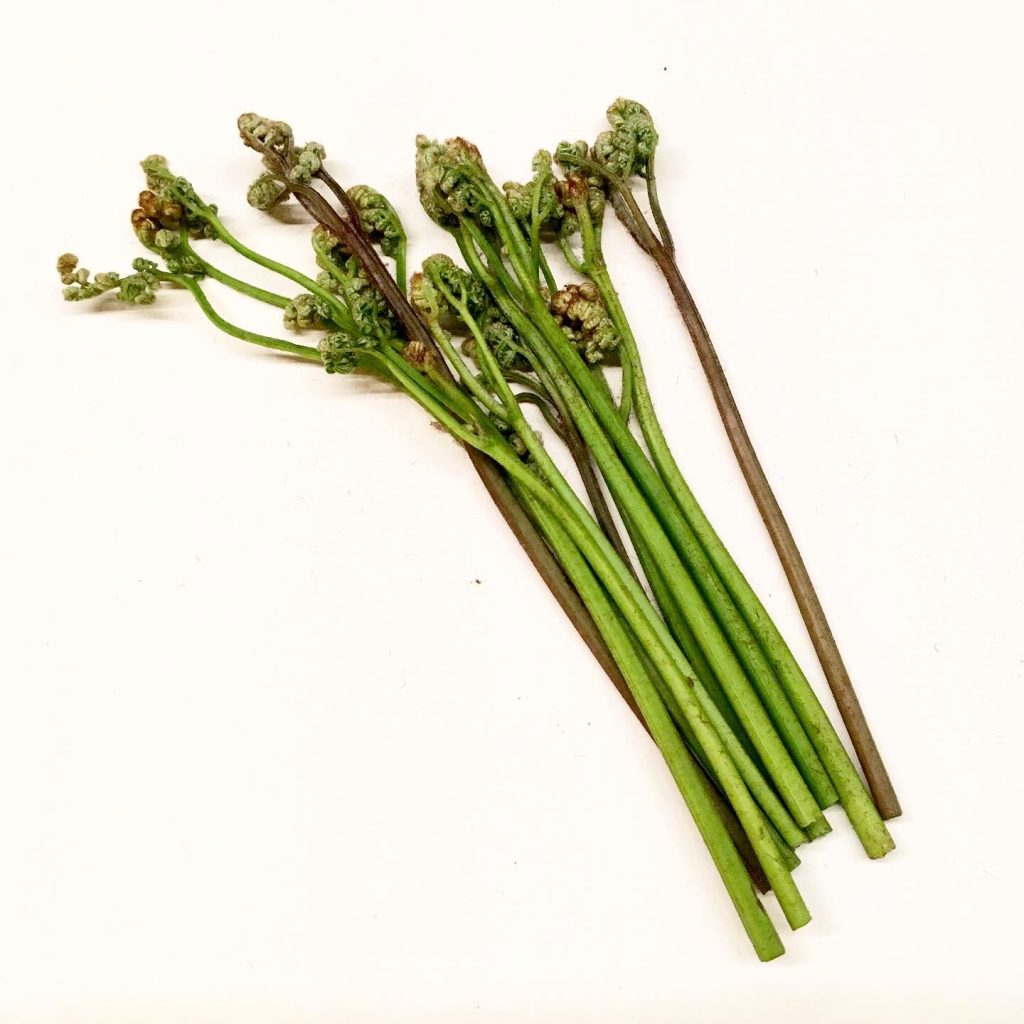Well well, the two main protagonists of these past two weeks in the kitchen, are not only delicious alone, but also prepared together. A classic Japanese recipe would be to simmer them individually and then combine them with a bit of red pepper 🌶 and soya sauce. I personally usually pass on the red pepper but this recipe is simple and delicious. Here with brown rice, scrambled eggs and salad.
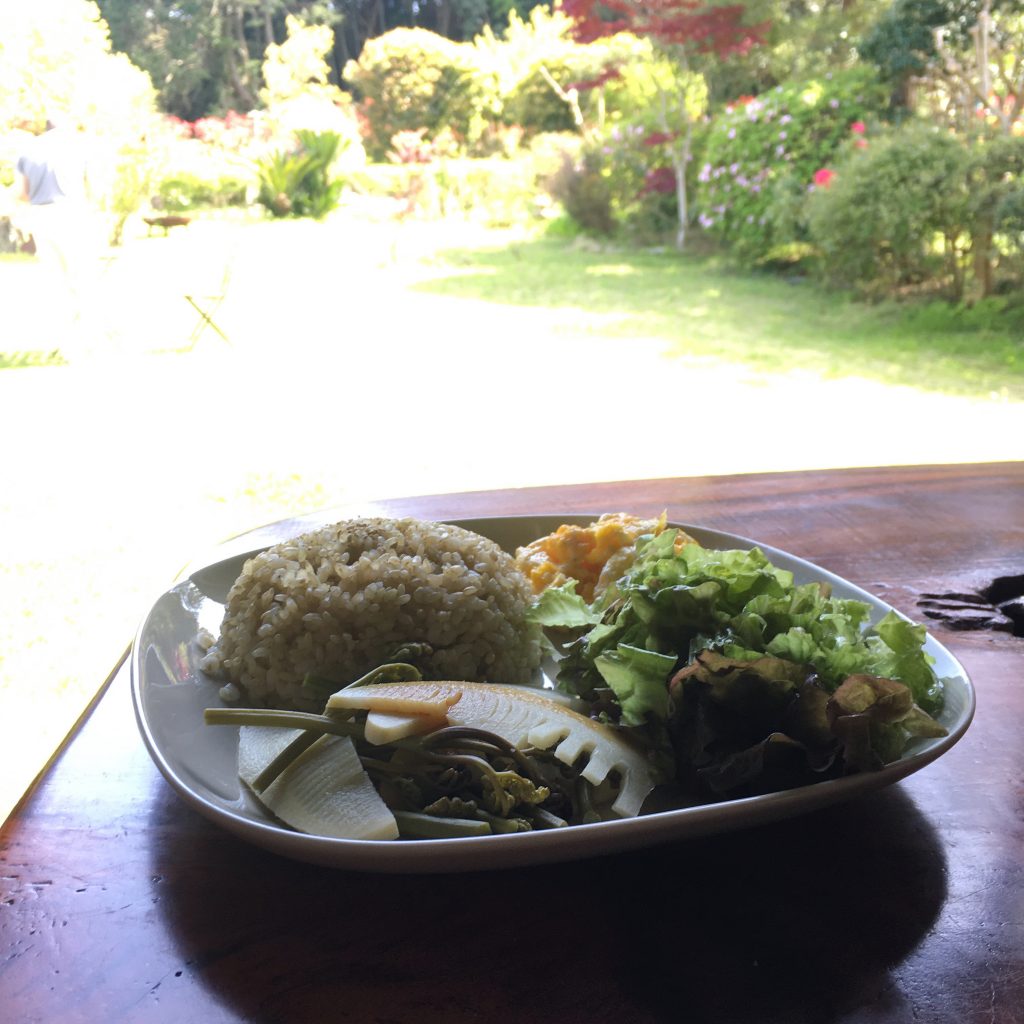
But really from the start I had something in mind using both combined… something that I love making with whatever is in season: steamed dumplings, of course!!!!
With the beginning of the new fiscal year, school term and the abundance of work in the garden, the surf season… I’ve been pretty busy! But dumplings don’t require that much time to make and they are always a feast. My idea was to combine chopped warabi and takenoko, with coarse ground pork filet, soya sauce and fill some sourdough dough with it, and steam. So that’s exactly what I did and it was soooo delicious I regretted it was our last takenoko!!! So if you still have a chance to get fresh takenoko and warabi I can only but recommend you try! I need mote practice to fold my dumplings beautifully but the taste is here!!!
